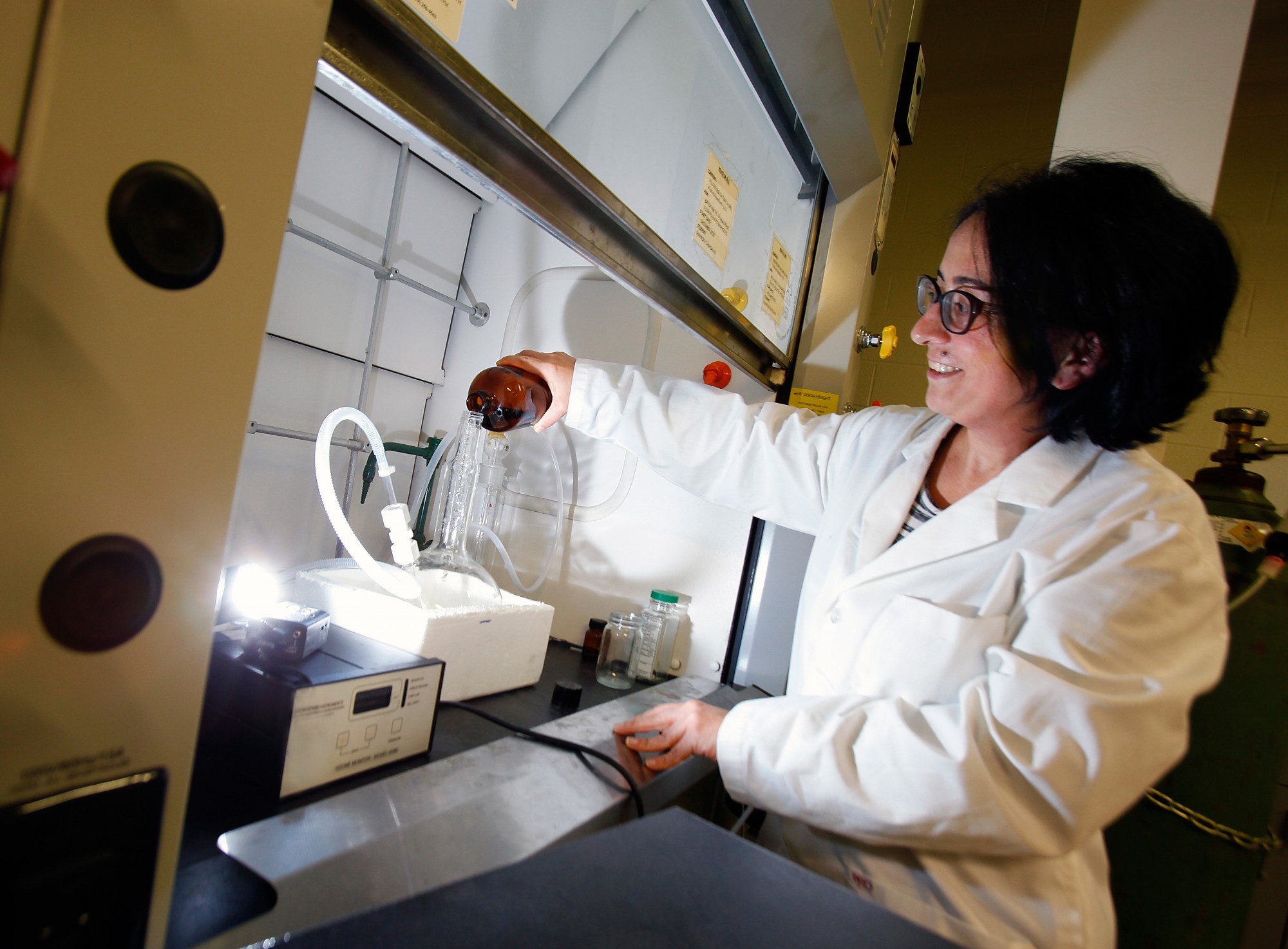 Dr. Merih Uslu, a postdoctoral fellow, is using laboratory scale batch reactors to study ozone-based advanced oxidation treatment process on water samples collected from the Detroit River.
Dr. Merih Uslu, a postdoctoral fellow, is using laboratory scale batch reactors to study ozone-based advanced oxidation treatment process on water samples collected from the Detroit River.
A project led by UWindsor researchers aims to provide local municipalities with a solution to toxic algae that wreak havoc on drinking water quality and wildlife.
Researchers in the environmental engineering department are examining the use of advanced water treatment options to remove cyanotoxins that have the potential to contaminate local drinking water sources as a result of harmful algal blooms (HABs). The blooms are largely caused by nutrients from farming activities, runoff from municipal wastewater systems and warm water temperatures.
“The issue of cyanotoxins produced by harmful algal blooms are now regularly being reported in many parts of Canada, including Lake Erie,” says Dr. Merih Uslu, a postdoctoral fellow working on the project under the supervision of Dr. Nihar Biswas, Dr. Saad Jasim and Dr. Rajesh Seth, of the Civil and Environmental Engineering Department.
The project was initiated by Dr. Jasim — president of SJ Environmental Consultants Inc. and UWindsor adjunct professor — and funded in partnership through the Mitacs Accelerate program. SJ Environmental Consultants Inc. provided $35,000 towards the $65,000 project.
Uslu cites a report by the International Joint Commission that states a majority of Great Lakes region drinking water treatment plants that draw from source waters historically containing cyanobacterial harmful algal blooms are not effectively removing all types cyanotoxins and occasionally fail to meet the World Health Organization’s safe drinking water level of 1 µg/L microcystin per day.

“In the report, the commission also recommended carrying out further research on optimal drinking water treatment approaches for Great Lakes cyanotoxins,” she added.
Uslu is using laboratory scale batch reactors to study ozone-based advanced oxidation treatment process on water samples collected from the Detroit River. The objective is to test the efficacy of the process of removing multiple cyanotoxins that may contaminate drinking water systems.
Jasim says the impact of climate change on the Great Lakes is becoming more noticeable.
“A clear example was the HABs and cyanotoxins outbreak in Toledo, Ohio in 2014. Cyanotoxins are becoming a serious challenge to the water industry due to their impacts on human health and the ecosystem,” says Jasim, an internationally recognized expert in ozone-based treatment processes.
“The use of advanced technologies such as ozone and ozone based advanced oxidation process need to be investigated further to evaluate the applications based on the speciation of cyanotoxins and water quality parameters."
Researchers expect to have results by June 2020.
Group photo: Dr. Nihar Biswas, Dr. Merih Uslu, Dr. Saad Jasim and Dr. Rajesh Seth.
